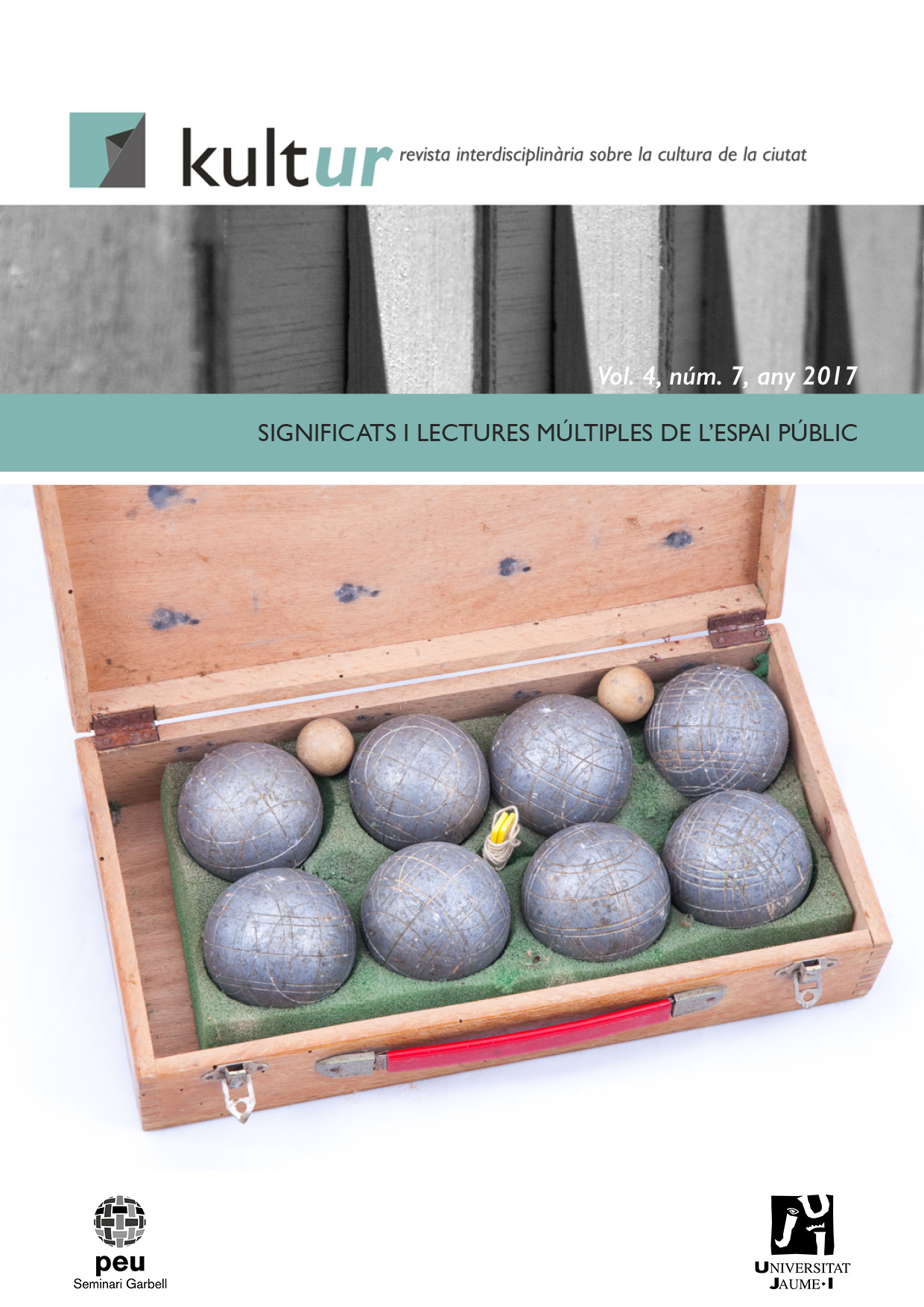Dynamic spaces with subjective depth. The public space in monsoon Asia
##plugins.themes.bootstrap3.article.main##
Resum
Les majors aglomeracions humanes del món, encapçalades per Tòquio, es troben a Àsia, especialment sota el clima monsònic. Si partim de la premissa que són «ciutats» també, ha d’existir alguna cosa que les fa ser-ho. En aquest article, aquesta cosa es defineix com a «espai públic» i, prenent Tòquio i Edo com a exemple, s’explora l’espai públic alternatiu diferent a les places i carrers europeus.
En primer lloc, es posa el focus d’atenció en la xarxa de carrerons estrets. A través de la introducció del concepte d’oku, es revela que l’espai públic de profunditat subjectiva es materialitza com la xarxa de carrerons estrets.
A més dels carrerons estrets, grans ciutats a Àsia haurien de tenir una altra forma d’espais públics acords a la seua escala enorme. Hiroba, el terme japonès per a plaça, es pot entendre com un procés dinàmic més que un lloc físic i estàtic, ja que emergeix per les accions espontànies dels ciutadans de fer-hiroba. Els festivals estacionals augmenten l’efecte de fer-hiroba i tenen la màgia de transformar qualsevol lloc temporalment en llocs de trobada accessibles a tothom.
L’espai públic a l’Àsia monsònica és un espai subjectiu amb dimensió dinàmica cap a l’oku que implica admiració per la natura.
Descàrregues
##plugins.themes.bootstrap3.article.details##
.png)
Tots els continguts de la revista kult-ur se distribueixen sota una llicència d'ús i distribució Creative Commons Atribució-Compartir Igual 4.0 Internacional (CC BY-SA 4.0), excepte indicació contrària. Pot consultar ací la versió informativa i el text legal de la llicència. La indicació de la llicència d'ús i distribució CC BY-SA 4.0 ha de constar expresament d'aquesta manera quan siga necessari.


